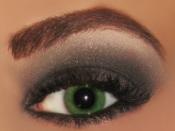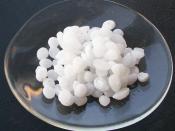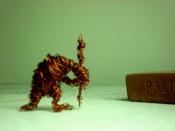Types Of Chemical Reactions
Aim: To investigate, discuss and identify several different types of chemical reactions through a series of tests and observations.
Decomposition of a carbonate by heating
Apparatus:
Spatula
Bunsen
Test tube (x2)
Copper (II) carbonate
Stopper and delivery tube
Limewater
Procedure:
1. Place a spatular of Copper (II) carbonate (CuCO2) in a test tube.
2. Fit with stopper and delivery tube leading into another test tube, filled with limewater.
3. Heat the test tube containing the Copper (II) carbonate and observe any changes that take place to it or the limewater.
Results/observations: As the light blue Copper (II) carbonate heated, It turned black and created a gas which bubbled through the limewater leaving a milky white precipitate.
Discussion: When the Copper (II) carbonate heated, enough energy was present to start a reaction in which it reacted with the surrounding oxygen in which the Copper (II) carbonate decomposed:
2CuCO2 + O2 2CO2 + 2CuO
Copper (II) carbonate + Oxygen Carbon dioxide + Copper oxide
The Carbon dioxide then travelled through the delivery tube and through the limewater:
CO2 + Ca(OH) 2 CaCO3 + H2O
Carbon dioxide + Limewater (Calcium hydroxide) Calcium carbonate + Water
This reaction leaves us with the calcium carbonate precipitate and indication that Carbon dioxide was the gas that was released through the first reaction.
From this reaction it is possible to determine that a reaction between a carbonate and oxygen (burning) results in carbon dioxide and a metal oxide.
Metal(X) Carbonate + Oxygen (and Heat) Carbon Dioxide + Metal(X) Oxide
Decomposition of a carbonate with an acid
Apparatus:
Spatular
Calcium carbonate
2mol L-1 Hydrochloric acid
Test tube (x2)
Limewater
Procedure:
1. Place a spatular of calcium carbonate into a test tube and add 2-3 cm of hydrochloric acid.
2. Fit the first test tube...


